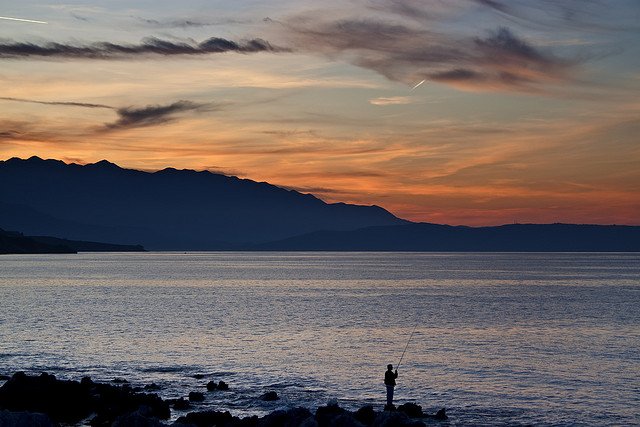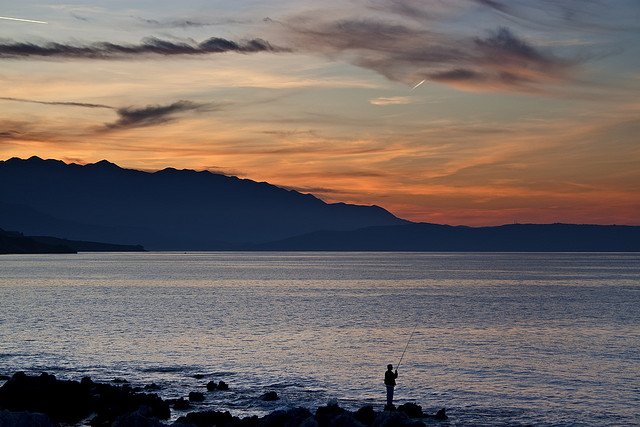
Every angler has experienced it at some time: The dreaded cold front. Fish seem to disappear, nothing is biting and frustration sets in. Do you give up? Or is there a way to beat a cold front?
Cold fronts definitely make fishing tougher and force many anglers to give up, but for those willing to learn a few basic tips, fish can be caught and the day does not have to be a complete loss.
First, it is important to know what is happening during a cold front. A cold front is characterized by rising air pressure. It is a quick change in the weather in which the air pressure rises significantly and colder, drier air moves in. The clockwise movement of the high pressure system can increase winds, which often come from the north. A cold front does not necessarily mean that the air temperature is cold. Often it just brings cooler temperatures, sometimes hardly noticeable, especially in the warmer months of the year.
The important thing for anglers to know about a cold front is that it disrupts nature, including fish. Game fish that inhabit shallower water are more affected by the abrupt change in air pressure than fish that live in deep water. This means bass, northern pike, muskies, stream trout, crappies and walleyes are often significantly impacted by cold fronts. Typically, when a cold front moves in, fish move to deeper water or cling to cover. Some species congregate. In general, feeding slows or stops completely. This is the point where many anglers give up. They try the techniques and baits they normally use, and nothing works — so they quit.
Catching fish during a cold front requires a change in technique and approach. Fishing will remain tough, but the odds of catching fish will dramatically increase by following a few key tips.
Slow down
Fish are huddled up during a cold front, unwilling to move fast or far to chase anything. The best chance to entice a fish into taking a bait is often to lay the bait right in front of its nose, with little or no movement. This is why live bait is by far the best option during a cold front. Try nightcrawlers, leeches, minnows — any live bait that fish like. Present the live bait with a bobber, no bobber or with a jig. Fish along structures like docks, dead trees, rock piles or weedlines; then be patient. If you find fish, or are in an area you suspect is holding fish, put the bait as close to the fish as possible and give them ample time to make a move on the bait.
Go deep
Fish deeper than you typically would. Fish that were along a dock or the edge of a shallow weedline one day may move to deeper water during a cold front. Try a deep rock pile or deeper weedline instead. Do not be afraid to put your bait right on the bottom.
Time change
During a cold front, fish often abruptly change the time of day they are feeding. Instead of fishing during their typical high-activity times of morning or evening, try mid-afternoon. They may only feed when the water temperature reaches is highest point during the day.
Fish downwind
Cold fronts often bring high winds. Try fishing the shore the wind is blowing toward. Game fish often move to this area for easy access to bait that is being pushed toward the shore by the strong winds. The effects of the wind pushing toward the shore will also create more turnover in the water, warming it and producing more fish activity.
It is important to note that a cold front can affect fish activity for up to two days after it moves through. So be prepared to switch to cold-front tactics, even if it appears the cold front has passed.
Cold front fishing is never easy, but the prepared angler can salvage some good opportunities by following the basics of fish activity, bait selection and angling approach to find and catch fish.
Photo credit: Flickr Creative Commons








